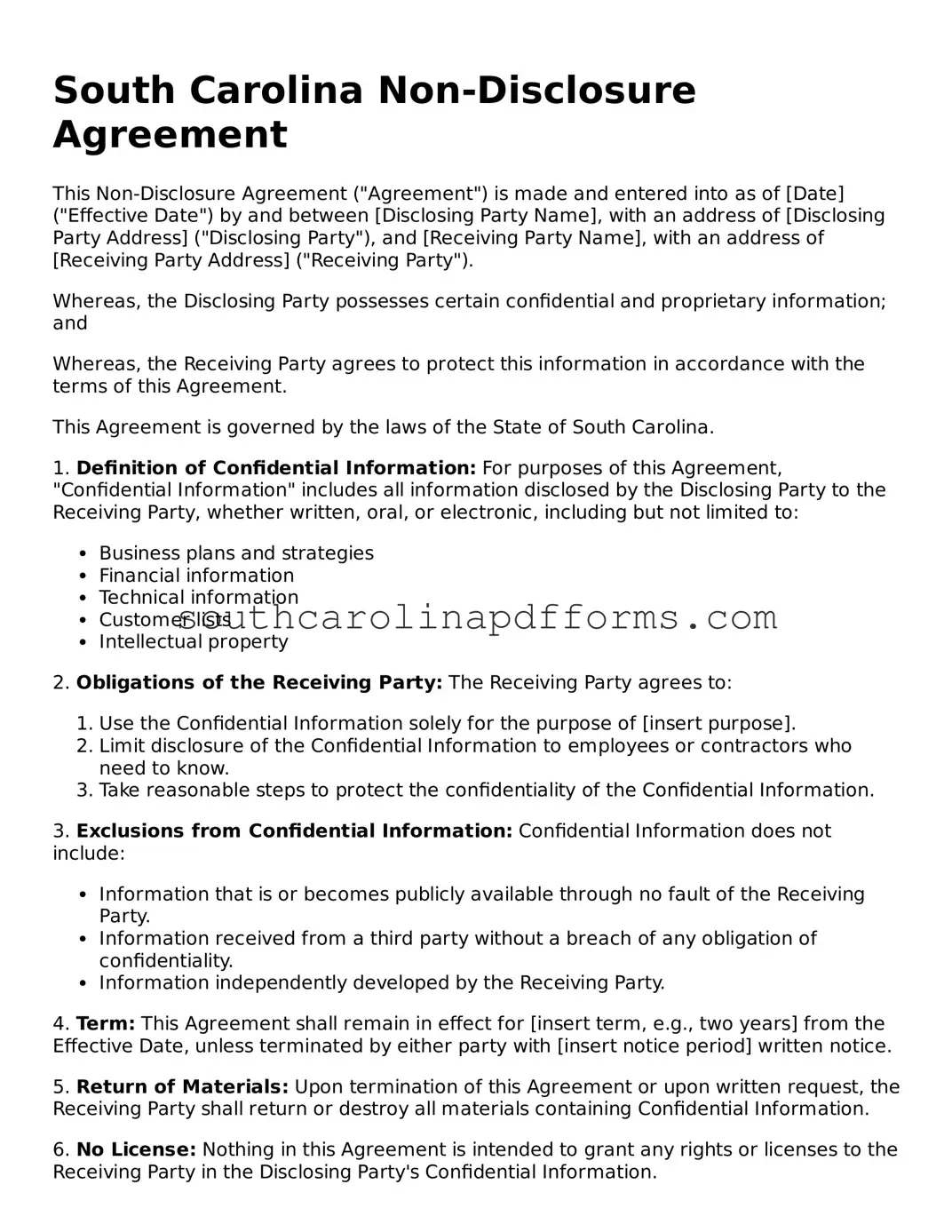In the business world, protecting sensitive information is crucial for maintaining a competitive edge. The South Carolina Non-disclosure Agreement (NDA) form serves as a vital tool for individuals and companies looking to safeguard their proprietary information. This legal document establishes a confidential relationship between parties, ensuring that any shared information—whether it be trade secrets, client lists, or financial data—remains private. By outlining the obligations of each party, the NDA helps prevent unauthorized disclosure of valuable information. Additionally, it typically includes specific terms regarding the duration of confidentiality, the scope of the information covered, and the consequences of breaching the agreement. Understanding these key aspects can empower businesses and individuals to engage in discussions and negotiations without the fear of their confidential information being misused. Whether you are a startup seeking to protect your innovative ideas or an established company negotiating a partnership, having a clear and enforceable NDA is essential for fostering trust and promoting collaboration.
